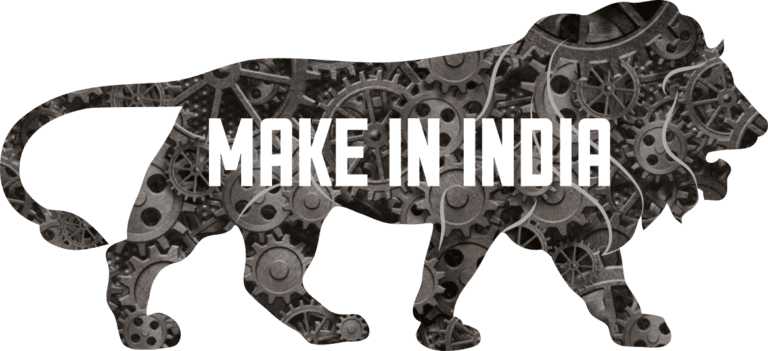India is a developing nation. Investments worth billions of dollars are made to promote growth in the economy, technology, and overall infrastructure. In 2020, the country recorded a high of 74.7 billion dollars in revenue generation through e-commerce. Companies such as Flipkart, Amazon, Myntra, Zomato, Bigbasket, and many more are investing in capital and workforce to promote the adoption of e-commerce. The e-commerce industry is growing at a steady rate with the help of these investments.
The use of smartphones, technology, and the Internet is on the rise. In 2020, the country recorded a whopping 167.8 million online buyers. This number will only increase going forward. One of the main reasons for the growth of e-commerce is the government initiatives promoting manufacturing in-house and encouraging more and more people to pursue their entrepreneurial ambitions.
The need for such initiatives is higher than ever. The ease of setting up an online business and the need for such arrangements have increased during the challenging times of the pandemic. Let us look at all the different reasons to start your e-commerce business in India in 2022.
1. Large Target Audience
India is a country with a vast population. The current population is estimated to be 136.64 crores, and nearly 50% of this population has access to the Internet. In the current pandemic circumstances, the government has used restrictive measures such as lockdowns and closure of traditional marketplaces to prevent the spread of the virus. Because of being quarantined to their homes, people fulfilled most of their demand through the Internet, causing online shopping to grow in a short time.
People relied on online giants such as BigBasket, Grofers, Flipkart, Amazon, and other vendors to get their daily essential materials and groceries. During this time, people were introduced to the exciting world of e-commerce and saw its impact on their daily lives.
Online shopping proved convenient and offered more variety than their local shopkeepers, offered them discounts and allowed them to get their products at the convenience of their doorstep. With such a large target audience and consumer base available, India is one of the favourite destinations for e-commerce.
2. Numerous opportunities to sell
India is a land of festivals and secularism. In a country that has over ten major religions, festivals and celebrations are a common sight. One of the most important festivals of the country is Diwali. According to a recent survey conducted, an average family spends at least INR 10,000 for the festival

When we do the math, crores are spent on a single festival. In a country with so many festivals and celebrations, e-commerce companies can utilise these opportunities to sell their products and services to their customers. Because of the repetitive buying patterns and predictive seasonal peaks, it is relatively more straightforward for online merchants to set up inventory online and capitalise on the opportunity.
3. Growing Economy

The World Bank estimates India to grow at a healthy rate of 6.5% for the next five years. The IT boom in the last few years is credited for the growth of the Indian economy. It provided better jobs, salaries and improved the quality of life for citizens across all income brackets. Another main reason for the economic growth is the capital invested into the country by leading companies such as Reliance, TATA industries, Accenture, Samsung, and many more.
The trend has only carried on, especially with more and more companies looking to expand their manufacturing operations because of government sanctions and stronger international relations. While China is in the lead when it comes to manufacturing, India’s working population can prove to be a game-changer in the coming future. Moreover, the country is increasingly producing the world’s brightest tech minds, causing the subcontinent to be a booming start-up place. The consequent economic growth is an excellent opportunity for young entrepreneurs to start their e-commerce business.
Nearly 41% of online shoppers from India are from rural areas and small towns. With the developing economy, the rural areas and small towns are starting to develop and play a more active role in contributing to the ecommerce activity in India. These places present a vast network of untapped resources and customer bases for e-commerce companies.
4. Governmental support
The government plays a vital role in influencing e-commerce organisations to start their business. To encourage new ventures in the e-commerce domain, India has launched multiple initiatives. A few of these renowned government initiatives are highlighted below
Digital India: It was launched in 2015, and this campaign’s primary goal is to build the technological infrastructure within the country instead of outsourcing operations to other countries. This initiative helped provide access to the Internet and made technology affordable. After the campaign’s launch, India’s internet usage has grown drastically, opening an excellent opportunity for E-Commerce companies to provide their services.

Make In India: The government launched the Make in India campaign back in 2014. This campaign was launched to incentivise local manufacturing. The various policies under this campaign increased the investments into the manufacturing domain and encouraged new companies to start their business. Along with it, the campaign allowed the manufacturers to sell directly to consumers through the E-Commerce platform. This reduced the number of middlemen involved, resulting in better deals for both the manufacturers and the consumers.

Start-Up India: The government launched this campaign in 2016. The primary aim of this campaign is to make starting a business as easy as possible. Under this initiative, young entrepreneurs got the training necessary to begin their ecommerce business, any form of assistance in infrastructure, workforce, or technology and the government-sanctioned loans to kick start their business.
With the help of these campaigns from the government, we observed a big explosion in the number of e-commerce start-ups and businesses in a short span.
5. Digitalisation of India
Digitalisation is one of the crucial movements for the country in modern times. In the early 2000s, possession of technologies was considered a privilege and a luxury. But today, technology has become a necessity and is a part of our day-to-day lives. This was only possible because of the initiatives taken by the government in promoting the use of technology. The primary step in promoting the use of technology was to make the technology accessible and affordable.
Tech companies such as Reliance Jio, Samsung, Redmi, BSNL, and Airtel contributed significantly to digitalisation. The ultimate goal of this initiative is to take technologies to rural areas and small towns. Once the digitalisation of all regions started becoming a reality, the number of online shoppers grew exponentially. A prediction says that by the end of 2030, the whole subcontinent will have access to the Internet and smart devices. This prediction provides a tremendous growth opportunity for e-commerce businesses in the coming future.

Given the current pandemic circumstances, physical interaction between people is dangerous. Over the last year, the country has moved leaps and bounds towards a digital India. People around the country are getting access to computers, laptops, mobiles, and other smart devices through government initiatives. The government is creating a platform for the entire industry to flourish on. The current pandemic circumstances and the performance of the e-commerce industry during these difficult times have created a bond between the consumers and the ecommerce platforms.
6. Introduction of online payments and e-wallets
To promote the digitalisation of India, young entrepreneurs, as well as tech giants, launched numerous payment gateways and digital wallets. Paytm, GooglePay and Phonepe are some of the most prominent online payment gateways and digital wallets. The aim of these online payment gateways and digital wallets was to introduce cashless and quick transactions. The use of these applications made their entire transactional process easy and user-friendly.
The e-commerce industry saw the benefits of digital wallets and integrated them into their websites and mobile applications. Online marketplaces observed a significant rise in the number of users and transactions. Today, anyone can install a mobile app of their choice and buy anything with the click of a button. Advancements in technology are making it more lucrative and easy for a user to shop online.
7. Adaptation of Western Culture
Western culture plays a crucial role in influencing the mindset of Indian people. Over the past few years, the influence of western culture has been growing at a steady rate. The nation’s culture is fascinated with the lifestyle in western countries and wants to lead the same kind of lifestyle. This also impacts the use of technologies and behaviour in online shopping. Indian ecommerce giants such as Flipkart and Myntra got their inspiration from global giants like Amazon. Flipkart initially started as an online book store but evolved to accommodate other products, just like Amazon began.

People started admiring global brands and their services. They want access to products and services, which were served globally. This has created a massive demand for international products and services. With this change in the customer profile and the target audience’s needs, India presents itself as an excellent opportunity for e-commerce companies to secure their business goals.
The Bottom Line
One of the most definite predictions for the e-commerce industry is the growth of local and small businesses to compete with the current industry giants in 2021. The next big prediction for the e-commerce industry in India is the use of technology to enhance user experience during online shopping. Companies like Amazon have begun tracking buyer patterns to improve their recommendations and predict the kind of products that a particular user would love. Moreover, we’ll be seeing an enormous shift in the warehousing industry as a whole. As more and more online retailers continue to pop up, the warehousing industry will need to develop flexible storage options to cater to their varying storage requirements.
It is safe to say that online retailing is a viable option for individuals who are currently looking to start their own business from scratch or are looking to upscale their local business to an international level. Now is the right time to get into the Indian market and be at the forefront of the ecommerce boom that the country is about to face in the coming years.
Related posts
- 13 Reasons To Start Your Ecommerce Business
- How To Start An Ecommerce Business & Sell Products Online
- 10 Key Benefits Of Ecommerce For Your Business
- 23 Ecommerce Business Ideas To Make Money
- How To Start Dropshipping In India?
- 7 Easy Steps To Start Selling Online In India
- List Of Top 10 Online Shopping Sites In India
- 8 Best Profitable Startup Ideas In India For 2024
- 20 Profitable Internet Business Ideas You Can Start Tomorrow
- 10 Reasons To Start A Dropshipping Business
- How To Start Selling On Paytm In 2024
- 5 Key Advantages Of Dropshipping Business
- Dropshipping Vs Amazon FBA: Which Is Best For Online Seller
